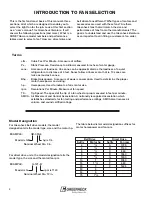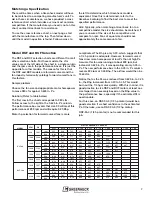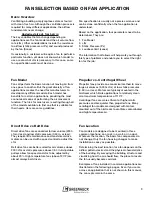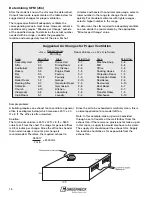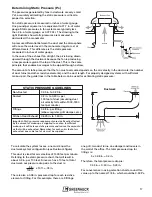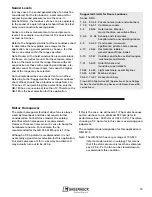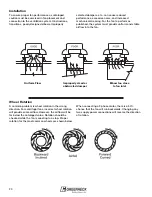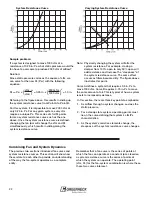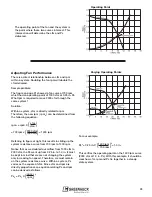
FAN SELECTION BASED ON FAN APPLICATION
Direct Drive vs Belt Drive
Direct drive fans are economical for low volume (2000
cfm or less) and low static pressure (0.50 in. or less).
They require little maintenance and most direct drive
motors can be used with a speed control to adjust the
cfm.
Belt drive fans are better suited for air volumes above
2000 cfm or static pressures above 0.50 in..Adjustable
pulleys allow fan speed and cfm to be adjusted by
about 25%. High temperature fans (above 120°F) are
almost always belt driven.
Fan Location
Fan models are designed to be mounted in three
common locations: on a roof, in a wall, or in a duct.
Whatever the location, the basic fan components do
not change. Only the fan housing changes to make
installation as easy as possible.
Determining the best location for a fan depends on the
airflow pattern desired and the physical characteristics
of the building. By surveying the building structure and
visualizing how the air should flow, the place to locate
the fan usually becomes evident.
Examples of fans installed in common applications are
illustrated on the following 6 pages. Even if you come
across an application that is not shown in this manual,
the concepts remain the same.
Basic Overview
Ventilating a building simply replaces stale or foul air
with clean, fresh air. Although the ventilation process is
required for many different applications, the airflow
fundamentals never change:
Undesired air out, fresh air in
The key variables that do change depending on
applications are the fan model and the air volume flow
rate (cfm). Other considerations include the resistance
to airflow (static pressure or Ps) and sound produced
by the fan (Sones).
Occasionally, a customer will require a fan to perform a
particular function, yet does not know which model to
use or even what cfm is necessary. In this case, some
fan specification work must be done.
Fan specification is usually not a precise science and
can be done confidently when the fan application is
understood.
Based on the application, four parameters need to be
determined. They are:
1. Fan Model
2. cfm
3. Static Pressure (Ps)
4. Loudness limit (sones)
The information that follows will help walk you through
this type of problem and enable you to select the right
fan for the job.
Fan Model
Fans all perform the basic function of moving air from
one space to another. But the great diversity of fan
applications creates the need for manufacturers to
develop many different models. Each model has
benefits for certain applications, providing the most
economical means of performing the air movement
function. The trick for most users is sorting through all
of the models available to find one that is suitable for
their needs. Here are some guidelines.
Propeller vs. Centrifugal Wheel
Propeller fans provide an economical method to move
large air volumes (5,000+ cfm) at low static pressures
(0.50 in. or less). Motors are typically mounted in the
airstream which limits applications to relatively clean
air at maximum temperatures of 110°F.
Centrifugal fans are more efficient at higher static
pressures and are quieter than propeller fans. Many
centrifugal fan models are designed with motors
mounted out of the airstream to ventilate contaminated
and high temperature air.
9




